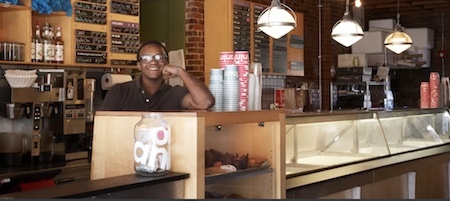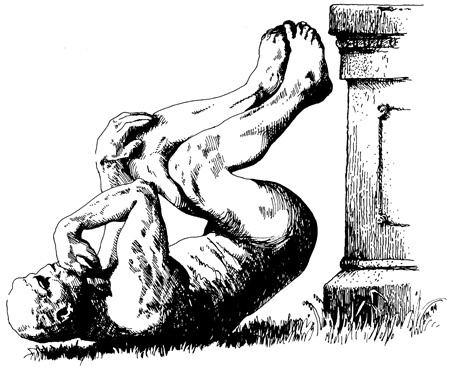Marc Abrahams's Blog, page 179
July 12, 2018
Umbrellas blowing inside out – why’s it funny?
What’s funny about watching someone struggle with an unruly umbrella? Few, if any, have come up with a better explanation than W H Auden who took a stab at it in 1952, and came up with two reasons :
“a) An umbrella is a mechanism designed by man to function in a particular manner, and its existence and effectiveness as a protection depend upon man’s understanding of physical laws. An umbrella turning inside out is funnier than a hat blowing off because an umbrella is made to be opened, to change its shape when its owner wills. It now continues to change its shape, in obedience to the same laws, but against his will.
b) The activating agent, the wind, is invisible, so the cause of the umbrella turning inside out appears to lie in the umbrella itself. It is not particularly funny if a tile falls and makes a hole in the umbrella, because the cause is visibly natural.”
See: ‘Notes on the Comic’, Thought: Fordham University Quarterly, Volume 27, Issue 1, Spring 1952. Also re-published in ‘The Dyer’s Hand : and other essays’, 1962
BONUS assignment [optional] Have you got a better explanation?

July 11, 2018
NEW SERIES OF EVENTS: Improbable Research Table Talks
This month, we’ll begin doing a new kind of Improbable Research event: Improbable Research Table Talks. The first event will happen on Monday morning, July 16.
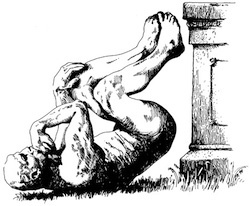 At each Improbable Research Table Talk, Marc Abrahams (editor of the Annals of Improbable Research, and founder of the Ig Nobel Prize ceremony) will chat with you about one or another research study that makes people laugh, then think. Some of these studies have won Ig Nobel Prizes; others we have explored in the magazine, in the podcast, etc.
At each Improbable Research Table Talk, Marc Abrahams (editor of the Annals of Improbable Research, and founder of the Ig Nobel Prize ceremony) will chat with you about one or another research study that makes people laugh, then think. Some of these studies have won Ig Nobel Prizes; others we have explored in the magazine, in the podcast, etc.
These chats will be cozy, informal, and brief, around a table. Sometimes Marc will bring along a professor, physician, engineer, or other famous or infamous researcher.
Please join us!
The first Improbable Table Talk
The first talk will be Monday, July 16, 2018, at 10 am, at Toscanini’s Ice Cream, 159 First St., Cambridge, Massachusetts, USA. It will include special guest researcher Gus Rancatore, proprietor of Toscanini’s. Bring friends and colleagues, if you like. The even is free.
Future Improbable Table Talks
We will announce many of these talks on the Improbable events schedule.
If you are in the Boston area (or not far beyond it), and would like to gather a few friends and host an Improbable Research Table Talk at your favorite coffee shop, office, lab, library, school, or other cozy place, please get in touch with us.

Primate Social Behavior in the Operating Room [research study]
Ig Nobel Prize winner Frans de Waal and colleagues purlished a new study, using old techniques to study a little-studied kind of primate: human surgeons at work in an operating room.
The study is: “Ethological Observations of Social Behavior in the Operating Room,” Laura K. Jones, Bonnie Mowinski Jennings, Melinda K. Higgins, and Frans B.M. de Waal, Proceedings of the National Academy of Sciences, no. 201716883, July 2, 2018. (Thanks to Philipp Weisser for bringing this to our attention.) The authors explain:
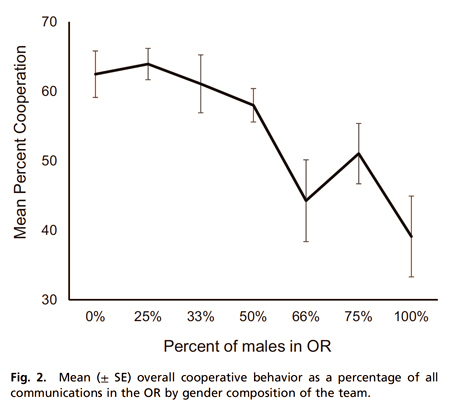
“Hierarchy and gender composition affect the balance of cooperation and conflict on surgical teams. In this investigation, behavior was quantified with methods traditionally used to study nonhuman primate groups. Observers used an ethogram to timestamp 6,348 spontaneous social interactions from 200 surgical procedures. Conflict and cooperation in the operating room [OR] showed a significant interaction effect with regard to professional roles (e.g., conflict was initiated mostly down the hierarchy between individuals several ranks apart) and by gender interaction (e.g., cooperation was better if the attending surgeon’s gender differed from that of the team majority)…. Instead of using post-hoc questionnaires, which are unreliable and often self-serving, we wanted to record actual behavior and relate it to hierarchy and gender. Our findings show that the OR is a microcosm of typical primate social tendencies.”
Katie Langen writes about the study, in Science magazine: “Yelling, cursing less likely to break out in operating rooms when female surgeons are present.”
The 2012 Ig Nobel Prize for anatomy was awarded to Frans de Waal and Jennifer Pokorny, for discovering that chimpanzees can identify other chimpanzees individually from seeing photographs of their rear ends.
REFERENCE for that prize-winning research: “Faces and Behinds: Chimpanzee Sex Perception” Frans B.M. de Waal and Jennifer J. Pokorny, Advanced Science Letters, vol. 1, 99–103, 2008.

July 9, 2018
Ig Nobel TICKETS go on sale TODAY at NOON
TICKETS for the 28th First Annual Ig Nobel Prize Ceremony will go on sale today, TUESDAY, JULY 10, 2018, at NOON.
Tickets will be available exclusively from the Harvard Box Office.
Two Iggy extras:
2018 Ig Nobel bookmark (downloadable)
2018 Ig Nobel poster (downloadable)

The benefits of watering plants with Club Soda (study)
“We used six Helzine [sic] soleirolii, commonly known as Baby’s Tears, plants to conduct our experiment. The plants were divided into two groups, A and B. Both groups were placed in the same amount of sunlight and given the same soil. The plants were fed according to florist instructions. However instead of plain tap water, group B was fed Club Soda. Every day at 7 pm each plant had one of its shoots measured and recorded. This continued for ten days. At the end of the experiment, data was arranged and compared.”
The research team, from University of Colorado Boulder, US, determined that plants watered with Club Soda fared considerably better :
“Plants given carbonated water not only grew faster but also developed a healthier shade of green in comparison to plants given tap water. […] The nutrients in the Club Soda are like a double dose of essentials for plants.”
See : The Effect of Carbonated Water on Green Plants by Lindsay Danzell and Jessica Greenberg, CU Boulder, Fall 2002.
Note: The study doesn’t specify the brand used in the experiments – the photo shows, by way of an example, President’s Choice Club Soda.

July 7, 2018
Professor Kosinski, Generator of Improbable Research
 The Guardian profiles Michael Kosinski, a Stanford University assistant professor of organizational behavior. Professor Kosinski is a prolific generator of improbable research:
The Guardian profiles Michael Kosinski, a Stanford University assistant professor of organizational behavior. Professor Kosinski is a prolific generator of improbable research:
Artificial intelligence (AI)—
‘I was shocked it was so easy’: meet the professor who says facial recognition can tell if you’re gay
… Weeks after his trip to Moscow, Kosinski published a controversial paper in which he showed how face-analysing algorithms could distinguish between photographs of gay and straight people. As well as sexuality, he believes this technology could be used to detect emotions, IQ and even a predisposition to commit certain crimes. Kosinski has also used algorithms to distinguish between the faces of Republicans and Democrats, in an unpublished experiment he says was successful – although he admits the results can change “depending on whether I include beards or not”.
How did this 36-year-old academic, who has yet to write a book, attract the attention of the Russian cabinet? …
Here’s video of a TV interview with Professor Kosinski:

July 6, 2018
What Happens to The Cool Kids, Later In Life [research study]
“What Ever Happened to the ‘Cool’ Kids? Long-Term Sequelae of Early Adolescent Pseudomature Behavior,” Joseph P. Allen, Megan M. Schad, Barbara Oudekerk, and Joanna Chango, Child Development, vol. 85, no. 5, 2014, pp. 1866-1880. The authors, at the University of Virginia, explain:
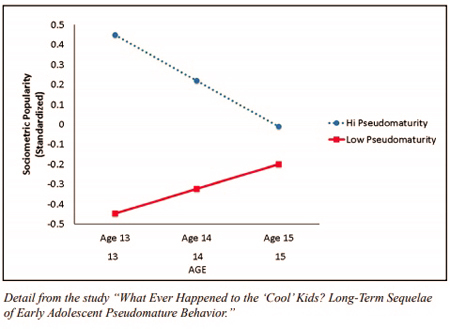
“In a multimethod, multireporter study following a community sample of 184 adolescents from ages 13 to 23, early adolescent pseudomature behavior was linked crosssectionally to a heightened desire for peer popularity and to short-term success with peers. Longitudinal results, however, supported the study’s central hypothesis: Early adolescent pseudomature behavior predicted long-term difficulties in close relationships, as well as significant problems with alcohol and substance use, and elevated levels of criminal behavior.”
 Read that and more, in the column “Soft Is Hard—Further evidence why the “soft” sciences are the hardest to do well” [free, downloadable PDF], in the special NOISE issue of the Annals of Improbable Research.
Read that and more, in the column “Soft Is Hard—Further evidence why the “soft” sciences are the hardest to do well” [free, downloadable PDF], in the special NOISE issue of the Annals of Improbable Research.
For heaps of improbable research, subscribe to the magazine (or if you like, buy single issues). The magazine has six new issues a year, all in PDF form.

July 5, 2018
Professor D’Arcy on like a contemporary vernacular
“The selective attention paid to the language of adolescents has led to the enduring belief that young people are ruining the language and that, as a consequence, the language is degenerating. One feature of contemporary vernaculars that is often held up as exemplification of these ideological principles is like, the ‘much-deplored interjection… that peppers the talk of so many of the unpliant young these days’ (Wilson 1987, 92). There is, in fact, an intricate lore surrounding like. It includes the idea that like is meaningless, that women say it more than men do, and that it is an Americanism, introduced by the Valley Girls.”
 So writes professor Alexandra D’Arcy (Director of the Sociolinguistics Research Lab, Department of Linguistics, and Chair, Human Research Ethics Board, Office of Research Services, University of Victoria, Australia) in LIKE AND LANGUAGE IDEOLOGY: DISENTANGLING FACT FROM FICTION American Speech, (2007) 82 (4): 386-419.
So writes professor Alexandra D’Arcy (Director of the Sociolinguistics Research Lab, Department of Linguistics, and Chair, Human Research Ethics Board, Office of Research Services, University of Victoria, Australia) in LIKE AND LANGUAGE IDEOLOGY: DISENTANGLING FACT FROM FICTION American Speech, (2007) 82 (4): 386-419.
Continuing the considerations, Professor D’Arcy has a new book devoted to the subject of ‘Like’ entitled : Discourse-Pragmatic Variation in Context : Eight hundred years of LIKE (John Benjamins Publishing, $143, hardback and e-book)

July 4, 2018
Flow, metaphor, flow: Constructal Law
Some things can remind you about almost everything. (Jane Siberry demonstrated this with her song “Everything reminds me of my dog.”) Some ideas can explain specific physical patterns—patterns you can see around you if you start looking for them, patterns you can try to measure and ruthlessly compare with each other. And some of those ideas also can be metaphors that explain, in more general, more vague ways, all sorts of things about how people behave.
“CONSTRUCTAL LAW“ is one of the theories that can be applied to all sorts of things. The theory suggests (or insists) that almost everything evolves over a long period of time shaped by the flow of this and that. Why does the person who gave name to Constructal Law call it a “law,” rather than just calling it a “theory”? Because, as he sees it, the idea truly applies, always, to the things to which it applies. (As a metaphor, it can be applied, in truly clever ways, to almost everything.)
Quartz magazine has a couple of essays about constructal law: “Physics can explain human innovation and enlightenment” and “Everything created is predicted by nature: A new video explains the physics of flow.” Here’s that video about Constructal Law and about Adrian Bejan, the person who thought it up.
And here’s a video of Jane Siberry’s dogged dog-idea idea:
(Thanks to Jennifer Ouellette for bringing this to our attention.)

July 3, 2018
Ig Nobel TICKETS go on sale next week
TICKETS for the 28th First Annual Ig Nobel Prize Ceremony will go on sale exactly one week from today: on TUESDAY, JULY 10, 2018, at NOON.
Tickets will be available exclusively from the Harvard Box Office.
RECENT IG NEWS:
Exit, pursuing a bear: Farewell Troy Hurtubise
Commercializing the Prize-winning Egg-Unboiling Machine
Who might you meet at the Ig?

Marc Abrahams's Blog
- Marc Abrahams's profile
- 14 followers


